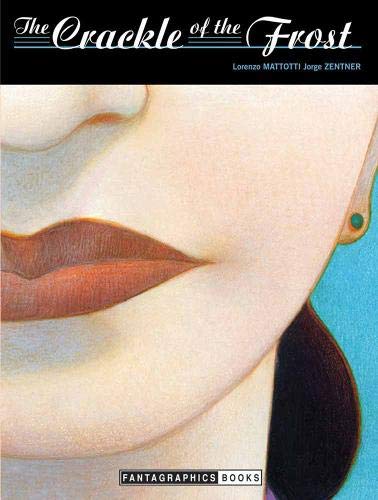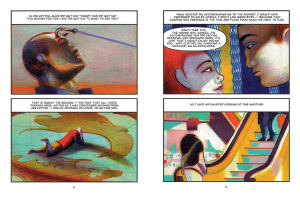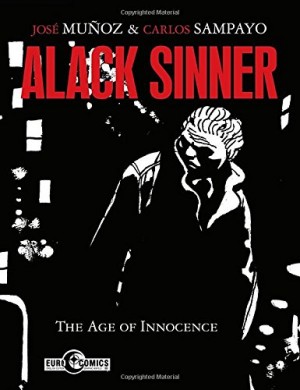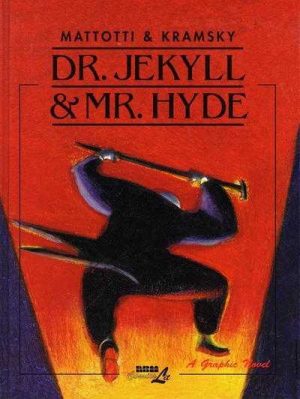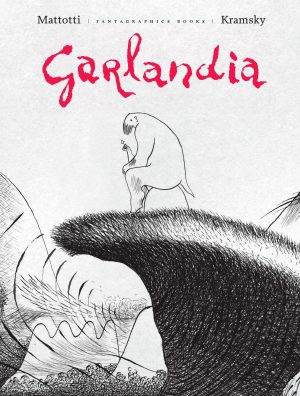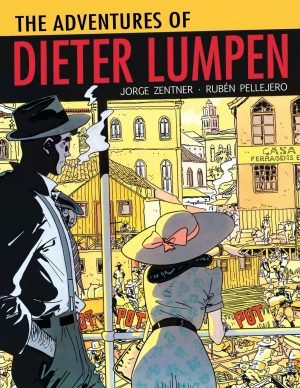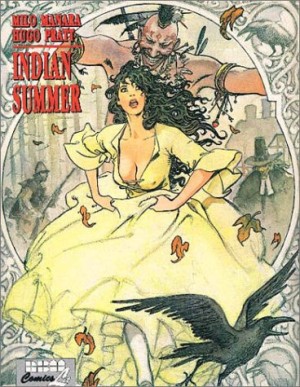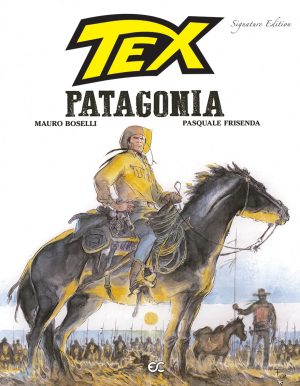Review by Graham Johnstone
The Crackle of the Frost has a beautiful cover. Look at the colour haloes around the lips, and that gentle shadow on the tip of the nose. It demonstrates Lorenzo Mattotti’s finesse, if not his bold palettes, or the expressive mutating figures and hallucinatory landscapes inside.
Few artists in comics have so powerfully channelled 20th Century modernism. Having mastered Expressionism, this time he avoids its sharper angles, in favour of the organic swirls of Edward Münch. He channels the writhing energy of Van Gogh, without the foregrounded brushstrokes – this looks more like the blended smoothness of pastels or coloured pencils. Most, radically, Mattotti frees art from the constraints of black outlines. He’s graced the pages of Vogue and Le Monde, and directed his own animated feature film, so Mattotti is a major artist, always welcome back to comics.
He’s no illustrator serving another’s vision. Like fellow Italian, Fellini, Mattotti’s an auteur pursuing a personal vision, facilitated by source texts and writing partners. His various approaches and collaborations have led to a similar variety of graphic novels: from the short, sharp Expressionist shock of Dr. Jekyll and Mr. Hyde, to the meandering Garlandia. For The Crackle of the Frost, Mattotti teams with psychotherapist and sometime writer Jorge Zentner.
We can only speculate on how they collaborated. Perhaps Mattotti followed his visual inspirations, and Zentner created the captions in response? Certainly the plot is minimal, and structure loose. When Alice asks for a baby, her partner Samuel panics, prompting her to walk out. A year later, he receives a letter “from very far away”, and decides he must find her. Some story elements are not (initially) seen in the visuals, so while the couple’s conflict is vividly captured in a powerful panel, there’s no visual hint of a baby. This suggests Zentner retrofitting story mechanics. Whatever the reason, dramatic potential is missed, for example, Samuel’s story over the stated year between her departure and arrival of the letter. We don’t see his reaction, or journey to the realisation he must go find Alice. Instead of these core elements, the book is busy with passing characters, and stories Samuel reads, which provide some beautiful art, but don’t change or reveal much about the protagonist. The ending picks up the theme of fathers and children, but is neither properly foreshadowed nor developed, so undercutting the impact.
Mattotti, according to Wikipedia, compares comics’ relationship of text and images, to lyrics and music. However, here, with Zentner’s lengthy captions weighing on each image, (with little dialogue or narration integrated into panels), it feels more like the images are repeatedly interrupted by the text. The captions aren’t even analogous to song lyrics, feeling more like a lecture on the images. It’s as if Zentner has to prove his with worth by volume of words. He over-narrates Samuel’s thoughts in leaden prose: “The words that opened the cage in which I had locked all my fears”. Samuel also has “both the best and worst night of [his] life,” and, with no trace of irony, another one a few pages later. Zentner’s background in psychology doesn’t even deliver nuances of character, or subconscious reveals. So the reading experience falls far short of Mattotti’s glorious art, failing to repay the effort involved.
Story weaknesses, and the lack of harmony between text and images, result in a frustrating read, made worse by unwieldy narration. Perhaps it would be more digestible in eight panel installments, as originally serialised. In any case, The Crackle of the Frost is worth buying just for Mattotti’s glorious art.
